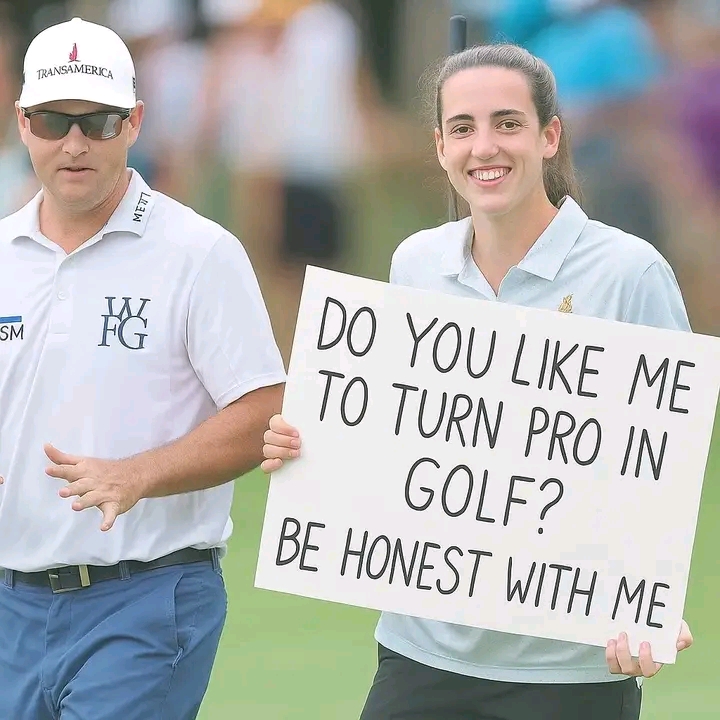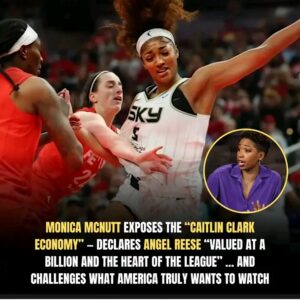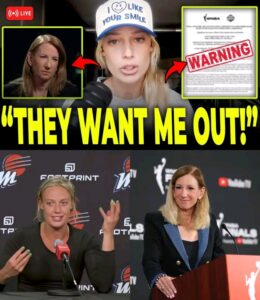
”No More Hoops – Golf Is My Only Game Now,” says Caitlin Clark, shocking the sports world. Caitlin Clark—yes, that Caitlin Clark—looked into her phone camera from a peaceful Gainbridge balcony and ended an era with the kind of midnight announcement that stops an entire sports world in its tracks. Not a single agent. No public relations campaign. No mysterious hints. Just her words, her voice, and a Fever jersey thrown over her shoulder as a parting gesture.
”The ball is in the basket for the final time,” she uttered in a composed, almost serene manner. “I’ve lived the dream, sold out every arena, and broken every record.” However, golf? My soul is that. Just me, the club, and eighteen holes of truth—no more injuries, no more drama. LPGA in 2026. This is it. The brightest star in the WNBA then turned the page. This wasn’t a snap decision made following a difficult game. Hours earlier, Clark and Tiger Woods had stunned the sports world by winning the RSM Classic Pro-Am title, her first major victory in her first major golf appearance. The moment she delivered the second shockwave was still being processed by social media.
However, the breadcrumbs were visible to anyone who has been paying attention. During the 2025 WNBA season, she played just 13 games due to groin and ankle problems. Despite her best efforts to smile during postgame interviews, she was clearly frustrated by these injuries. Her spirit had been weakened by the constant travel, the league politics, and the barrage of attention. She tried a line last week that seemed like a joke at the time. “Compared to free throws, fairways feel more liberated,” she remarked. Perhaps it wasn’t a joke after all. On that livestream, you could sense the weight in her voice. This was not a way out. It wasn’t a meltdown. Even though it was unexpected and perhaps unwanted for the WNBA, it was clarity.
The “Clark Effect” is another factor to take into account. Just her presence increased league viewership by 150%, made Indiana the most sought-after venue for women’s sports, and created a cultural buzz that didn’t exist prior to her arrival. To say that her star power was the foundation of the modern WNBA is not hyperbole. What now occurs? Christie Sides, the coach of the Fever, answered with a grace that sounded half maternal pride, half heartbreak. In a text message, she said, “Caitlin is a legend on any field.” “We’ll cheer for every birdie, but we’ll miss the logo threes.”

Nike, which is always quick to change course, declared right away that they were converting her $28 million basketball contract into a golf partnership with the Titleist brand. Her Q-School journey was confirmed to be sponsored by Gainbridge, the company behind her Pro-Am run. What about social media? It melted completely. Fans, athletes, analysts, and even PGA pros responded to the hashtag #ClarkToLPGA, which reached 5.2 million posts in less than an hour. A few were taken aback. A few were sentimental. Some made light of the fact that Tiger had found his new protégé.
This feels more significant than just changing careers. Clark is changing the definition of athlete reinvention, not just quitting the WNBA. She’s starting a whole new chapter, one swing at a time, from chasing albatrosses to 337 assists in her rookie season. Perhaps she is correct. Perhaps the fairway does feel more liberating. One thing is certain, regardless of whether you’re a fan of Fever or you just watched her because everyone else was talking about her: Basketball is not something Caitlin Clark is avoiding. She’s sprinting in the direction of what at last feels like home. The sports world can now witness her tee off into history.




